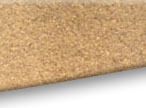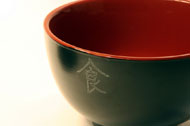




 |



Your message needn't be sacred text to be meaningful, nor engraved in stone to be noticed.Since 1997 I've been helping a diverse range of clients — from local entrepreneurs and artists to international corporations, from industrial manufacturers to non-profits — connect with their audience. What Kartouche Does | How Kartouche Works In his book Don't Worry, Make Money, Richard Carlson (known for his "Don't Sweat the Small Stuff" series) writes, "'I can do this myself better than anyone else' is really a foolish statement based on fear. It's ridiculous to spend your time doing things that others can do better, because your time is better spent doing the things that you're really good at. The truth is, none of us are experts at everything …" Working with Kartouche offers:
What Kartouche doesMarketing communication deals with generating demand for a product/service and driving sales. Typical projects would be a brochure or sell-sheet, the product descriptions on a website, a magazine ad, and packaging. Corporate communication is concerned with building the reputation of an organization itself (rather than its products or services) and managing brands. This includes annual reports, press releases, the "about us" page of a website, and some forms of social media. Publications — such as newspapers, newsletters, magazines, and books — are a means of sharing information and ideas with your readers. Good design is a balance of beauty and usability, the aesthetic and the practical. Design addresses what content is included and where those things are placed. Design is also concerned with how continuity is maintained with the brand and other collateral. A designer deals with questions like:
My role varies, depending on the client and project. Perhaps it's a specific task, such as layout design or content writing. Perhaps a more big-picture function, such as an art director or a project manager, is called for. Perhaps it's a combination of responsibilities. Please review my portfolio for specific examples. How Kartouche worksI work directly with clients who don't have an in-house marketing or creative department. And I work with marketing, advertising, communication, and PR agencies who occasionally need additional staff. Projects may be billed at an hourly rate or for a negotiated flat fee. I can also be retained for ongoing as-needed assistance: retainer clients receive priority when scheduling. Typically, I begin by meeting with key players to talk about the project's requirements and the client's preferences. The process is most effective when a client tells me what end result they are seeking; it's my job to then figure out the best way to get there. When we've agreed on the expectations, we'll map out a general plan and a timeline. Kartouche is both creative and pragmatic. Edison’s success in creating the light bulb was not in being the first one to conceive the idea, but rather in being the first person to resolve many of the practical issues involved with engineering the idea. Your message, product, or service; your individual and organizational personality; your audience or market; your time frame; your budget — all of these are factors I consider when developing a solution.
|

 The most familiar example is the oblong of ancient Egyptian hieroglyphics
naming a ruler or deity. In architecture, it is an ornamental
frame providing space for an inscription or a coat of arms. The term can also refer to a scrolling frame (around an illustration, for instance) or to a decorative emblem on a map with information about the publisher.
The most familiar example is the oblong of ancient Egyptian hieroglyphics
naming a ruler or deity. In architecture, it is an ornamental
frame providing space for an inscription or a coat of arms. The term can also refer to a scrolling frame (around an illustration, for instance) or to a decorative emblem on a map with information about the publisher.  The reality of the teacup is not the teacup itself,
The reality of the teacup is not the teacup itself,